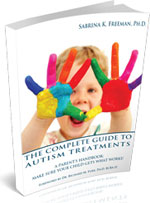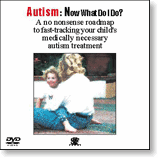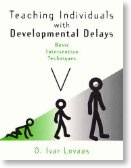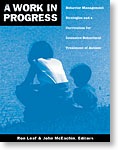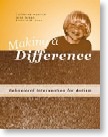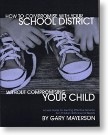Why do so many attempt to short change children with autism?
06/10/11 15:42
Science is stubborn -- you just can’t “do over” and expect original, robust findings to go away. However, that’s just what the National Standards Report (NSP) (funded by a private non-profit, fund-raising organization) tries to do in order to neutralize the 1999 New York State Department of Health Early Intervention Study. They justify this by saying:
• These previous guidelines are now outdated because reviews were completed before the turn of the 21st century.
• The reviews did not include all educational and behavioral treatment studies for a broad age range or a variety of ASD diagnoses.
• Evidence-based practice guidelines have evolved...”
I saw the above statements, and gave them the benefit of the doubt until I started reading and realized that the National Standards Report is a slick attempt to legitimate short-cut science for children with autism.
Today, I’m going to take Pivotal Response Training (PRT) as an example.
The NSP erroneously claim that PRT is an Established Treatment based on fourteen (14) studies. That sounds great until one understands the following about these studies:
Half of the studies came out before the New York Report. There goes their “evidence-based practice guidelines have evolved” argument since the NY Report had access to these studies and did not deem PRT best practices.
None of them compare their economic treatment against best practices which is Intensive Behavioral Treatment (IBT). If they’re so confident in PRT, why do they avoid going up against IBT? A comparison may be inconvenient for their entire research program since it is difficult to receive funding if your research program has little promise; therefore, it is best not to compare.
What evidence do the fourteen (14) studies provide for PRT to be considered an established treatment by the NSP?
The PRT folks are very involved in training free labor i.e., parents and peers. The first six (6) studies listed below emphasize the purported efficacy of training parents and peers, rather than creating the best outcomes from the treatment itself:
1988 - Training parents to use the natural language paradigm...
1995 - Effects of peer-implemented pivotal response training...
1997 - Multiple peer use of pivotal response training...
2007 - Parent-implemented natural language paradigm...
2008 - Recess is time-in: using peers...
2002 - Parent education for families of children with autism...
One (1) study looks at child demographics associated with outcomes. That is not a study in efficacy but rather the ubiquity of autism and the various underserved demographics.
2007- Child demographics associated with outcomes...
Now we are left with seven (7) studies upon which the NSR claim that PRT is an established treatment. These studies have collected data on a sum total of 20 children, in a short term study, with NO comparison to Intensive Behavioral Treatment, which is the treatment they must demonstrate is less effective in order to ethically replace IBT with PRT! The seven (7) studies are below:
1987 - A natural language teaching paradigm... Two (2) children in the study.
1992 - Language intervention and disruptive behavior... Three (3) children in the study.
1993 - Treatment of social behavior in autism... Two (2) high functioning children, 13 and 16 years old.
1995 - Teaching symbolic play skills to children with autism... Seven (7) children in the study.
1995 - Effects of sociodramatic play training... Three (3) children in the study.
2003 - Teaching children with autism self-initiations... Two (2) children in the study.
2007 - Using perseverative interests to elicit joint attention behaviors... Three (3) children in the study.
With such a small group of poorly designed studies, done on so few children, without a decent comparison group, over such a short period of time, how can the National Standards Report come up with such a misguided conclusion, unless they were attempting to replace the recommendations of the New York Report? The larger question I keep asking myself, over and over again, is: Why do so many continue to brazenly attempt to short change children with autism when it comes to effective -- but costly -- treatment?
A piece of advice, stemming from a lifetime of experience in confronting the rationing of treatment for children with autism: be very wary of any theory or study that purports to have a conveniently economical way to ameliorate the condition of autism. If it is free, or inexpensive, generally that’s what it is worth, irrespective of how many national standards reports are published!
• These previous guidelines are now outdated because reviews were completed before the turn of the 21st century.
• The reviews did not include all educational and behavioral treatment studies for a broad age range or a variety of ASD diagnoses.
• Evidence-based practice guidelines have evolved...”
I saw the above statements, and gave them the benefit of the doubt until I started reading and realized that the National Standards Report is a slick attempt to legitimate short-cut science for children with autism.
Today, I’m going to take Pivotal Response Training (PRT) as an example.
The NSP erroneously claim that PRT is an Established Treatment based on fourteen (14) studies. That sounds great until one understands the following about these studies:
Half of the studies came out before the New York Report. There goes their “evidence-based practice guidelines have evolved” argument since the NY Report had access to these studies and did not deem PRT best practices.
None of them compare their economic treatment against best practices which is Intensive Behavioral Treatment (IBT). If they’re so confident in PRT, why do they avoid going up against IBT? A comparison may be inconvenient for their entire research program since it is difficult to receive funding if your research program has little promise; therefore, it is best not to compare.
What evidence do the fourteen (14) studies provide for PRT to be considered an established treatment by the NSP?
The PRT folks are very involved in training free labor i.e., parents and peers. The first six (6) studies listed below emphasize the purported efficacy of training parents and peers, rather than creating the best outcomes from the treatment itself:
1988 - Training parents to use the natural language paradigm...
1995 - Effects of peer-implemented pivotal response training...
1997 - Multiple peer use of pivotal response training...
2007 - Parent-implemented natural language paradigm...
2008 - Recess is time-in: using peers...
2002 - Parent education for families of children with autism...
One (1) study looks at child demographics associated with outcomes. That is not a study in efficacy but rather the ubiquity of autism and the various underserved demographics.
2007- Child demographics associated with outcomes...
Now we are left with seven (7) studies upon which the NSR claim that PRT is an established treatment. These studies have collected data on a sum total of 20 children, in a short term study, with NO comparison to Intensive Behavioral Treatment, which is the treatment they must demonstrate is less effective in order to ethically replace IBT with PRT! The seven (7) studies are below:
1987 - A natural language teaching paradigm... Two (2) children in the study.
1992 - Language intervention and disruptive behavior... Three (3) children in the study.
1993 - Treatment of social behavior in autism... Two (2) high functioning children, 13 and 16 years old.
1995 - Teaching symbolic play skills to children with autism... Seven (7) children in the study.
1995 - Effects of sociodramatic play training... Three (3) children in the study.
2003 - Teaching children with autism self-initiations... Two (2) children in the study.
2007 - Using perseverative interests to elicit joint attention behaviors... Three (3) children in the study.
With such a small group of poorly designed studies, done on so few children, without a decent comparison group, over such a short period of time, how can the National Standards Report come up with such a misguided conclusion, unless they were attempting to replace the recommendations of the New York Report? The larger question I keep asking myself, over and over again, is: Why do so many continue to brazenly attempt to short change children with autism when it comes to effective -- but costly -- treatment?
A piece of advice, stemming from a lifetime of experience in confronting the rationing of treatment for children with autism: be very wary of any theory or study that purports to have a conveniently economical way to ameliorate the condition of autism. If it is free, or inexpensive, generally that’s what it is worth, irrespective of how many national standards reports are published!
